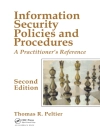This book provides information on data-driven infrastructure design, analytical approaches, and technological solutions with case studies for smart cities. This book aims to attract works on multidisciplinary research spanning across the computer science and engineering, environmental studies, services, urban planning and development, social sciences and industrial engineering on technologies, case studies, novel approaches, and visionary ideas related to data-driven innovative solutions and big data-powered applications to cope with the real world challenges for building smart cities.
Innehållsförteckning
1. Smart City Ecosystem – An Introduction.- 2. Datafication for secured smart cities.- 3. Secured big data infrastructure services.- 4. Intelligent infrastructure of secured smart cities.- 5. Cyber-physical systems for secured smart cities.- 6. Blockchain for smart cities.- 7. Context-aware security and privacy of smart cities.- 7. Privacy and social Issues in smart cities.- 8. Sensor and RFID applications of smart cities.- 9. Advanced data mining for secured smart cities.- 10. Big data for secured smart cities.- 11. Data analytics tools and technologies for smart cities.- 12. Machine learning and AI for secured smart cities.
Om författaren
Chinmay Chakraborty is working as an Assistant Professor (Sr.) in the Dept. of Electronics and Communication Engineering, Birla Institute of Technology, Mesra, India. His main research interests include the Internet of Medical Things, Wireless Body Area Network, Wireless Networks, Telemedicine, m-Health/e-health, and Medical Imaging. Dr. Chakraborty has published 75 papers at reputed international journals, conferences, book chapters, and books. He is an Editorial Board Member in the different Journals and Conferences. He is serving as a Guest Editor of MDPI, Wiley, CRC, Springer, IGI, Inderscience, Tech Science, Bentham Science Journals. Dr. Chakraborty is co-editing Eight books on Smart Io MT, Healthcare Technology, and Sensor Data Analytics with CRC Press, IET, Pan Stanford, and Springer. He received a Best Session Runner-up Award, Young Research Excellence Award, Global Peer Review Award, Young Faculty Award, and Outstanding Researcher Award.
Jerry Chun-Wei Lin received his Ph.D. from the Department of Computer Science and Information Engineering, National Cheng Kung University, Tainan, Taiwan, in 2010. He is currently a full Professor with the Department of Computer Science, Electrical Engineering and Mathematical Sciences, Western Norway University of Applied Sciences, Bergen, Norway. He has published more than 400 research articles in refereed journals, 11 edited books, as well as 33 patents (held and filed, 3 US patents). His research interests include data mining, soft computing, artificial intelligence and machine learning, and privacy-preserving and security technologies. He is the Editor-in-Chief of the International Journal of Data Science and Pattern Recognition, the Guest Editor/Associate Editor for several IEEE/ACM journals such as IEEE TFS, IEEE TII, ACM TMIS, ACM TOIT, and IEEE Access. He has recognized as the most cited Chinese Researcher respectively in 2018 and 2019 by Scopus/Elsevier. He is the Fellow of IET (FIET), seniormember for both IEEE and ACM.
Mamoun Alazab is an Associate Professor at the College of Engineering, IT and Environment at Charles Darwin University, Australia. He received his Ph D degree in Computer Science from the Federation University of Australia, School of Science, Information Technology and Engineering. He is a cyber security researcher and practitioner with industry and academic experience. Dr Alazab’s research is multidisciplinary that focuses on cyber security and digital forensics of computer systems including current and emerging issues in the cyber environment like cyber-physical systems and internet of things, by taking into consideration the unique challenges present in these environments, with a focus on cybercrime detection and prevention. He looks into the intersection use of Artificial Intelligence and Machine Learning as essential tools for cybersecurity, for example, detecting attacks, analyzing malicious code or uncovering vulnerabilities in software and hardware.












